Create a Facebook Mobile App Install Ad to give visibility to your mobile app
-
You have a mobile application and you want to promote it through the mobile version of Facebook? If you have already done advertising campaigns on the network, you will surely be tempted to go immediately to connect to Ads Manager in order to create your advertising. On the other hand, you must first follow these few steps to create what Facebook calls Mobile App Install Ads .
1. CREATE A PAGE FOR THE APP IN THE FACEBOOK APP CENTER
If you've already integrated your app with Facebook App Center, you can skip to step two.
To send traffic directly to the download page of a mobile application, you must first create a profile page for it in the App Center of the Facebook site for developers . You can also access it easily by using the Create App link in the options menu at the top right of the Facebook interface.
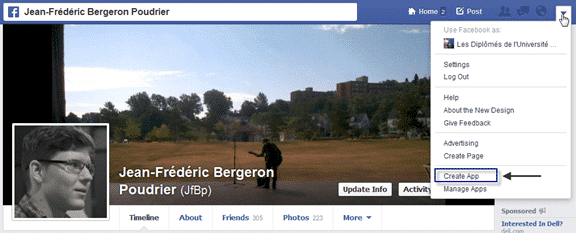
I will not show you all the fields that you will then have to fill in to create your page ( thes should be enough to inform you), but I will concentrate my efforts on the aspects related to mobile applications. Many fields must be filled in if you want your app to be discoverable by the App Center , but most of them are not necessary if you want to take advantage of Mobile Ads for Apps (no need to have an app that uses Facebook Login, no need to submit the app for review by the Facebook team, etc.).

1.1 APPLICATION INFORMATION
- Settings : First, you'll have to give the app a name , a namespace (which will appear in the app's URL on Facebook) and a contact email address .
- App details : The elements you need to fill in in order to be able to create an ad are the display name and the description . You will also need to add an 800×150 pixel cover image . When creating the ad, you will still need an additional 600x360 pixel image.
1.2 LINK WITH AN IOS APPLICATION
If your app ends up on iOS , you just need to include your app ID . The ID is visible at the end of your app's URL on iTunes: . You only need the sequence of numbers that follows the “id”.


1.3 LINK WITH AN ANDROID APPLICATION
If your application is available on Android , you will have to dig a little deeper to provide the necessary information:
- Package Name : The name of your application as found in the AndroidManifest.xml file or at the end of the application URL on Google Play: . The name should look like this: com.example.androidapp .

- Class Name : Here, you will have to dig into the AndroidManifest.xml file . The class name is the name of the application launch activity. Usually, the activity name is appended to the package name , resulting in a result that might look like this: com.example.androidapp.MainActivity .

1.4 (OPTIONAL) LOCALIZED VERSION OF THE PAGE
If your application is available in several languages (via a single application), you can create localized pages where the information contained can be translated to better suit your target customers, in the language in which they will use the application.
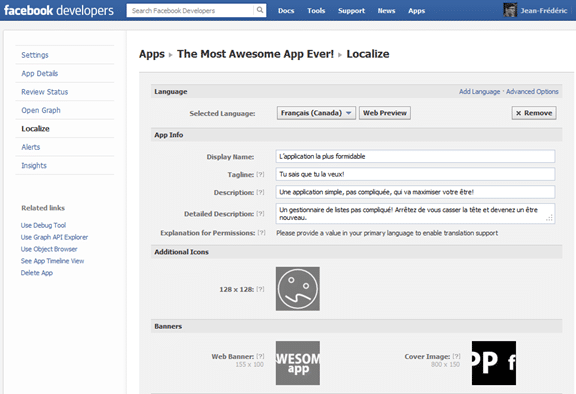
2. CREATE AN AD
2.1 VARIOUS MEANS OF CREATION
For the creation of an ad, you can do this:
- From Facebook Developers : In the application's card, select the Promote option from the left menu.
- From Ads Manager
- From Facebook Power Editor (with Google Chrome only): by accessing it from the Ads Manager (in the left menu) or directly via this link .
Important: Similar to Facebook page ads, you must be an app administrator to create and manage Mobile App Install Ads for the app.
The interface is then substantially the same as for the creation of other types of Facebook ads. We take you by the hand by showing you the changes you can make to the ad (with a preview of the result in real time) and you can select targeting criteria relating to geography, language, and several other related criteria to the Facebook profile of the users you want to target.
2.2 TARGETING BY DEVICE
For device targeting, you can choose at a high level whether it's an iPad, iPhone or iPod (for iOS apps) and the operating system version. For Android, it is only possible to select the OS version to target.
If you want to target a specific version of the device, it is possible to do so from the broad categories , but beware: this should be the only category criteria you choose. Since broad categories work as "category A OR category B OR category C", you will instead need to narrow your target by precise interests to keep segmentation for a specific device version.
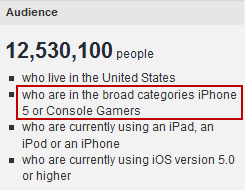
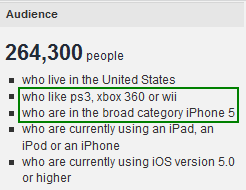
To target iPhone 5 users who love game consoles, use a combination of broad categories and precise interests .
For Android, phone manufacturers (Samsung, HTC, Motorola, etc.) can be chosen as a broad category , but it is not possible to target a particular model (ex.: HTC One ) unless doing so in precise interest .
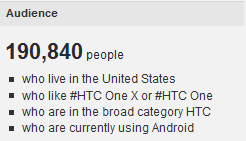
2.3 EXCLUSION OF USERS WHO HAVE ALREADY INSTALLED THE APPLICATION
For Android , no need to do anything, this user pool is automatically excluded and they will not see your ads.
For applications on iOS , on the other hand , you will have to modify the main .plist file of your application. You will then need to add a unique item containing “fb+ your app ID)” under a new array URL types, and URL Schemes.

Source: developers.facebook.com 3. MEASURE THE PERFORMANCE OF YOUR ADS
To measure the number of installs generated by your ads (and not just the number of clicks on them), you will need to integrate the Facebook SDK and an additional line of code into your application. This will allow the application to send a signal to the Facebook server when first opened by the user.
For more details, I suggest you refer to the Facebook tutorial which will give you the procedure to follow: Advanced steps for mobile measurement (at the bottom of the page).
Integrating this into your applications will also allow you to optimize your bets on your ads using a CPI ( cost-per-install ) within the Facebook interface.
4. YOU ARE READY TO GO LIVE!
Now that your ad is ready: set your budget, your bet, and launch your campaign! Don't forget to experiment with different targeting styles and ads so you can better optimize later.
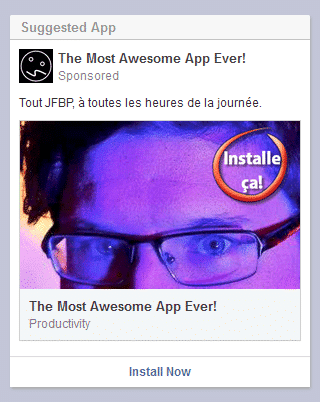
For more information:
.jpg)

-Sep-07-2022-08-25-30-70-AM.png)

.jpg)









